Cherry, like the cherry, belongs to the family of rustic. And no wonder these cultures are so similar among themselves in appearance. So, in some countries, they even have the same names, for example, the British and Cherry, and the cherry call "Cherry", and the French are "Cerise". Even the famous work of A.P. Chekhov "Cherry Garden", many abroad call "Cherry Garden". However, even though the cherry and cherry are related cultures, they still have several differences, both by the method of growing trees and in the taste of the fruits (a sweetheart has a sweet taste, cherry - "with sourness"). Next, we will tell you more about the characteristics of cherry, on planting and leaving for this culture.
Characteristics of cultural varieties
In order for the sweet cherry to give a rich and tasty harvest, you need the right caring for trees. If all the landing and care conditions are observed, the tree in height can grow to 18-19 meters. In addition, it can be collected annually from each of them by 40-45 kg of berries. However, it is worth saying that the tree begins to be fruit not immediately after the landing, but must pass 4-6 years. A plentiful and full crop of a cherry pleasing gardeners only for the 9-10th year after landing.
Total gardeners are known about 3000 cherry varieties, among them are most popular:
- Bigarro. Berries have a dense and crisp flesh. You can use them in fresh form, as well as during the preparation of various dishes and conservations, jams. The juice obtained from the berries of this variety is weak. Very good, various drinks and compotes cooked from soremen Bigarro variety, because these berries do not lose their elasticity, even after the processing process.
- Gini. These berries, in contrast to the fruits of grade Bigarro, have a soft and juicy flesh. In view of these properties, these fruits are rarely used in cooking and minor transport. However, they are recommended in fresh form, as they are very tasty and useful.
If 50 years ago, this culture was grown only in southern latitudes, today it can be planted in more cold regions of Russia today thanks to specific care and landing. However, do not forget that this culture refers to cross-pollinated. Therefore, there should be trees-pollinators next to it. In this case, the sweet cherry will delight a tasty and abundant harvest.
The following cultural varieties are most often grown in Russia:
- Eat This variety of trees is rather steady to cold winters. Gives a harvest in average quantities, up to 30 kg. Refers to medium-grained varieties. Culture is resistant to some dangerous diseases of plants, for example, to a cockclock and swasteporiosis. The berries of this variety are quite large, their weight averages 7-8 grams. Fruit color - bright or dark red. Ripe berries have almost black shade. The taste they are very sweet.
- Grade "Fate". In the height, these trees reach 2.7 meters. Every year, this culture variety with proper care gives a rich harvest - up to 45 kg. Fruits appear for 5-6 years after planting a tree. Fruit red color. Berries are sweet to taste. In addition, this culture can be grown in decorative purposes, as the trees of this variety have a very beautiful neat crown.
- Insome. With proper care, this type of trees is not bad for the winter period. Fruit yellow berries. Fruits are sweet, with small sourness. Suitable for use in culinary purposes for cooking jams and compotes. By themselves, the trees of this variety are very high, so periodically need crowns.
- Crimean. This trees grade perfectly worries winter cold. Refers to early grades, as fruit starts at the beginning of summer. Fruits have a juicy flesh. Berry color - pink. Great suitable for home blanks for the winter. Crimean sweet cherry fruits abundantly, one year can be collected up to 40 kg of berries. It refers to decorative varieties, as the trees grow low, and have the original "dreamed" crown. Berries themselves have medium sizes. The weight of each fetus does not exceed 5 grams.
- Tyutchevka. Grade is resistant to winter cold. Trees are plentifully fruit and give up to 45 kg of harvest annually. It grows in the height of the sweet cherry of this variety up to 3 m. Berries are dark red. Their size is quite large. Weight from 4 to 7 grams. The taste of fruits is sweet. Berries are used both for consuming in fresh form and for the preparation of compotes, jams, pastes.
- Bryansk pink. Refers to late varieties. Pretty well worries cold winters. Fruit for the 5-6th year after landing. Berries have medium sizes. Their weight varies about 4-5.5 grams. Have a pink shade. Fruits juicy, with small sourness. It is consumed in fresh and after passing the culinary processing. So, there are quite good compotes from the cherry of this variety.
Planting cherry
Cherry - a light-affilome plant. Therefore, solar canopies are suitable for planting trees. The soil for a culture disembarking should be sufficiently fertile, well aerated, moisture. For this purpose, light medium-linous or sampling soils are suitable. Do not land trees in windy places where there are often drafts. Since the cherry is a cross-pollinated culture, it is recommended to plant it next to the sickness of another variety or with cherry. Thus, trees flowers will be perfectly polluted, and the trees themselves are plenty.
It is worth saying that the cherry does not like an abundant watering and stagnation of water, so try to pick up a plot for the planting of the culture located far from the groundwater running.
In the northern parts of our country, cherry landing is carried out in spring, and in the southern - in the fall.
Cherish seedlings landing order:
- It is preliminarily recommended to plow the ground.
- Next landing wells are made. Each of them should be a depth of about 90 cm and a width of 80-100 cm.
- It is worth remembering that the root system of sweet cherry is quite massive, so do not put the trees close to each other. The distance from one to another seedling should be at least 3-4 meters. In addition, some varieties of trees have a spreader crown, so plants can create shadow for each other. Be sure to consider this when landing seedlings.
- Before planting trees, the soil cover must be "corrected". So, if the ground is clay, then 2 buckets of sand add to the landing fossa, if, on the contrary, the soil is sandy, then clay falls back in the well.
- Then, a special soil mixture should be filled with a special soil mixture. It is located in its composition: 2 buckets of the earth, 2 kg of ammonium sulfate, 2 kg of superphosphates, potash fertilizers - 1 kg, wood ash, manure (32 kg).
- Next, in each landing fossa, the support column is fixed to which the seedlock will then be linked. Try each tree when landing is located in the very center of the pit.
- Then let the seedling towards the support and gently stick it. After landing, each color should be pouring.
- Next is carried out mulching. For this, humus, peat, fond of foliage.
Care care
Cherry trimming
Care for cherries lies not only in timely watering and making fertilizers, but also in trimming the crown. The very first trimming is carried out immediately after planting a seedling in the hole. It is done in order to balance the underground and ground part of the seedling. So, 4 healthy branches are selected and cut into one third, the remaining branches are completely cut off.
The second trimming is carried out on the second year of the village's life. This is necessary so that several new side branches appear on the saplings.
Crown trees should have a scratched-tier look. The first tier consists of 3 major branches, the second - from 2 skeletal shoots, the third tier - from one branch. The active growth of the tree branches is observed in the first 5 years. It is during this period that an annual crown crown should be carried out.
Next, in the process of growth and adults, it is necessary to remove dry and damaged branches.
Watering, cleaning weeds from cherry
Cherry belongs to cultural plants. It does not tolerate nearby weed herbs. Therefore, it is recommended to make a timely weeping of a garden. There should be no weeds in the attractive circle. Every year, the priority zone should be expanded, so if in the first year it is approximately 80 cm, then to the second year of the village's life - there must be more than 1 meter. Then, annually should increase the rolling circle by 20-50 cm.
As for irrigation, then as mentioned above, the cherry does not like the abundance of water, so it is enough to water the trees three times a year. In addition, the soil should be mulched annually. For this, peat, foliage. Do not forget to loosen the soil in the rolling collar. After you did this, add fertilizer to the land.
There is a small secret from the gardeners, how to attract more bees to the tree and increase its pollinability. So, it is recommended to spray the tree with honey fluid during the summer period. Introducing pollinities, you can significantly increase the amount of harvest assembled.
Between the trees it is recommended to equip small beds on which to grow various garden crops. It will save the cherry in the winter and will save it from the harmful effects of frost.
As fertilizers for trees, it is suitable for dung, humid, aqueous infusion of ash, as well as nitrogen, potash and complex feeders. In addition, in the spring period to the ground, 70 g of urea is added around the cherry. In the spring and autumn tree trunks need to bleve. This will help protect the trees from the cracking of the cortex.

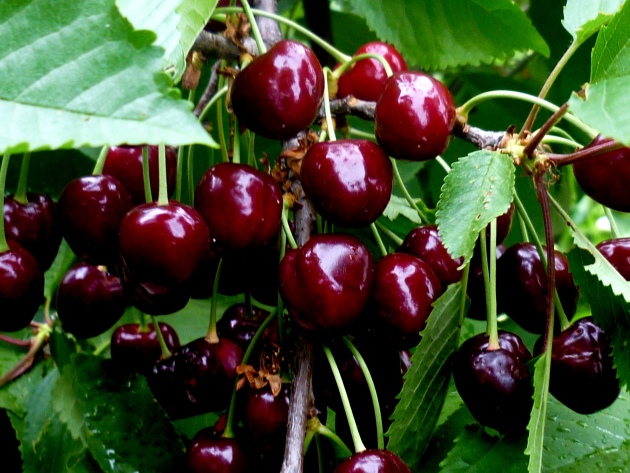
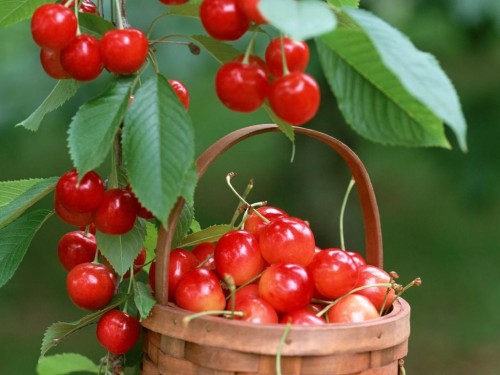
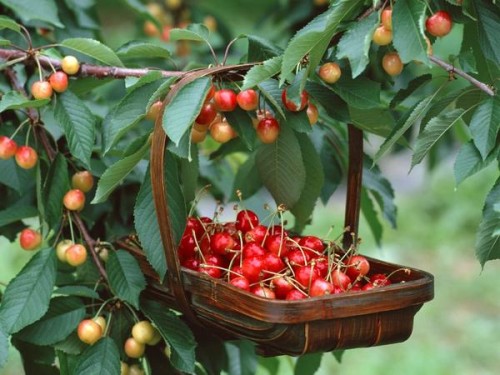
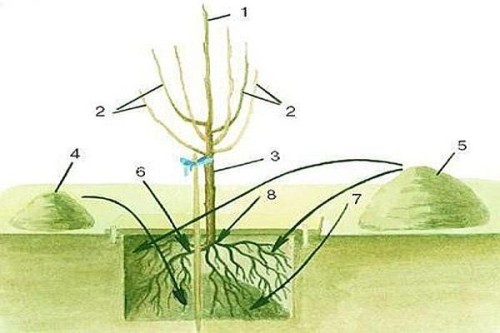
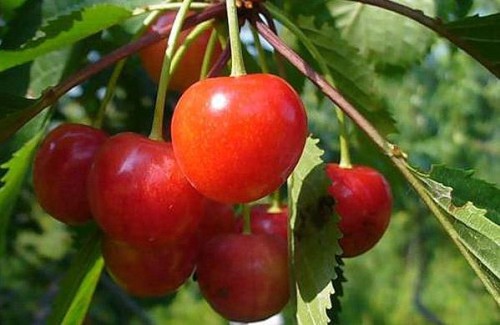
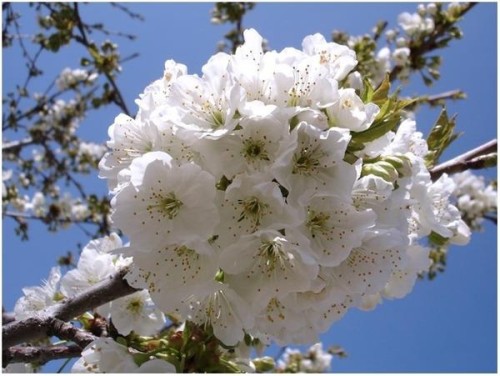












 Start a discussion ...
Start a discussion ...